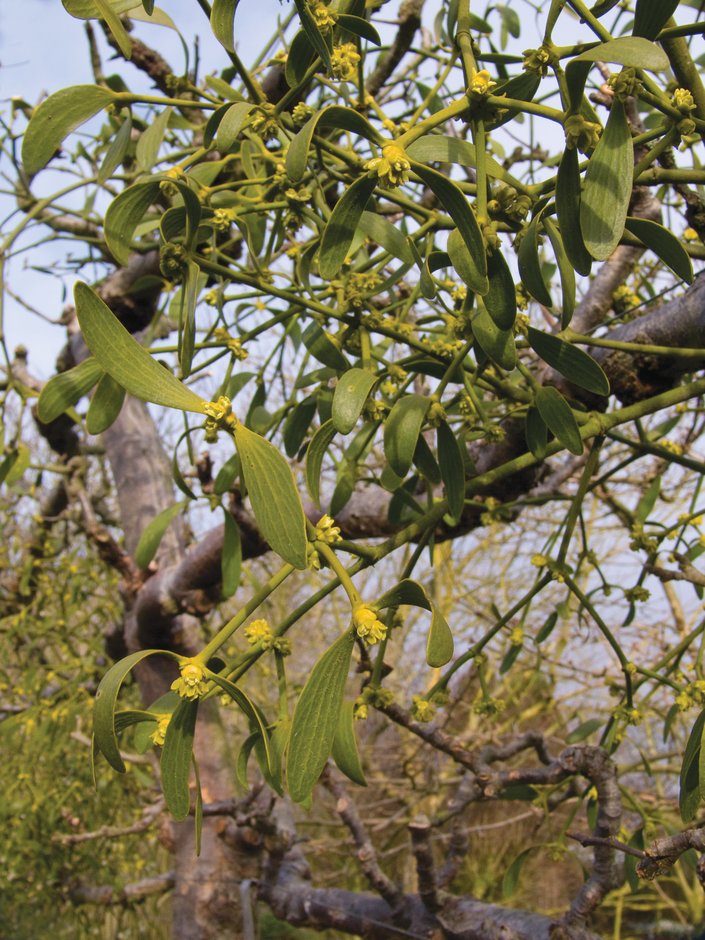Viscum album
mistletoe
A woody, evergreen shrub that is semi-parasitic, taking water and nutrients from its host but also carrying out its own photosynthesis. In winter it is easy to spot as a shrubby, spherical mass in its host tree, which is most commonly apple. Yellowy-green leaves are held in pairs on branching stems, and tiny, yellowish flowers are produced in spring. These are followed, on female plants, by round, white berries. The berries are favoured by birds including blackcaps, which wipe their beaks clean of seeds on a handy branch, and thrushes, which eat the whole berry allowing the seed to pass through their digestive system and be dispersed. Mistletoe is widespread, but scattered, in England, with a stronghold in the south-west midlands and the southern Welsh borders. It is rare in the rest of Wales, Scotland and Ireland
Size
Ultimate height
1–1.5 metresTime to ultimate height
5–10 yearsUltimate spread
1–1.5 metresGrowing conditions
Moisture
pH
Colour & scent
| Stem | Flower | Foliage | Fruit | |
| Spring | Green Yellow | Green | ||
|---|---|---|---|---|
| Summer | Green | |||
| Autumn | Green | White | ||
| Winter | Green | White |
Position
- Full sun
- Partial shade
Aspect
East–facing or North–facing or South–facing or West–facing
Exposure
Exposed or Sheltered Hardiness
H6Botanical details
- Family
- Santalaceae
- Native to GB / Ireland
- Yes
- Foliage
- Evergreen
- Habit
- Bushy
- Potentially harmful
- Harmful if eaten. Wear gloves and other protective equipment when handling Pets: Harmful if eaten - for further information and contact numbers regarding pets, see the HTA guide to potentially harmful plants
- Genus
Viscum is a genus of between 70 to 100 mistletoe which are hemiparasitic plants growing on woody shrubs and trees, taking their water and nutrients from their host. Woody with opposite pairs of green foliage, they produce inconspicuous green-yellow flowers and white, yellow, orange or red berries. Seeds are embedded in a sticky juice inside the berries which are dispersed by birds such as the mistle thrush
- Name status
Correct
- Plant range
- Europe, Asia, N Africa
How to grow
Cultivation
Grow on a suitable host tree; apple, lime, hawthorn and poplar are most common, although hundreds of other tree species will support mistletoe
Propagation
Propagate by squeezing the seeds from the berries, and using the glue-like jelly within, stick the seeds directly onto younger branches of the desired host tree (there is no need to lift a flap of bark). Tiny seed leaves may appear within weeks, but it can be 3 years or more before young plants with leaves develop
Suggested planting locations and garden types
- Low Maintenance
- Cut flowers
Pruning
No pruning required
Pests
Generally pest-free
Diseases
Generally disease-free
Get involved
The Royal Horticultural Society is the UK’s leading gardening charity. We aim to enrich everyone’s life through plants, and make the UK a greener and more beautiful place.
